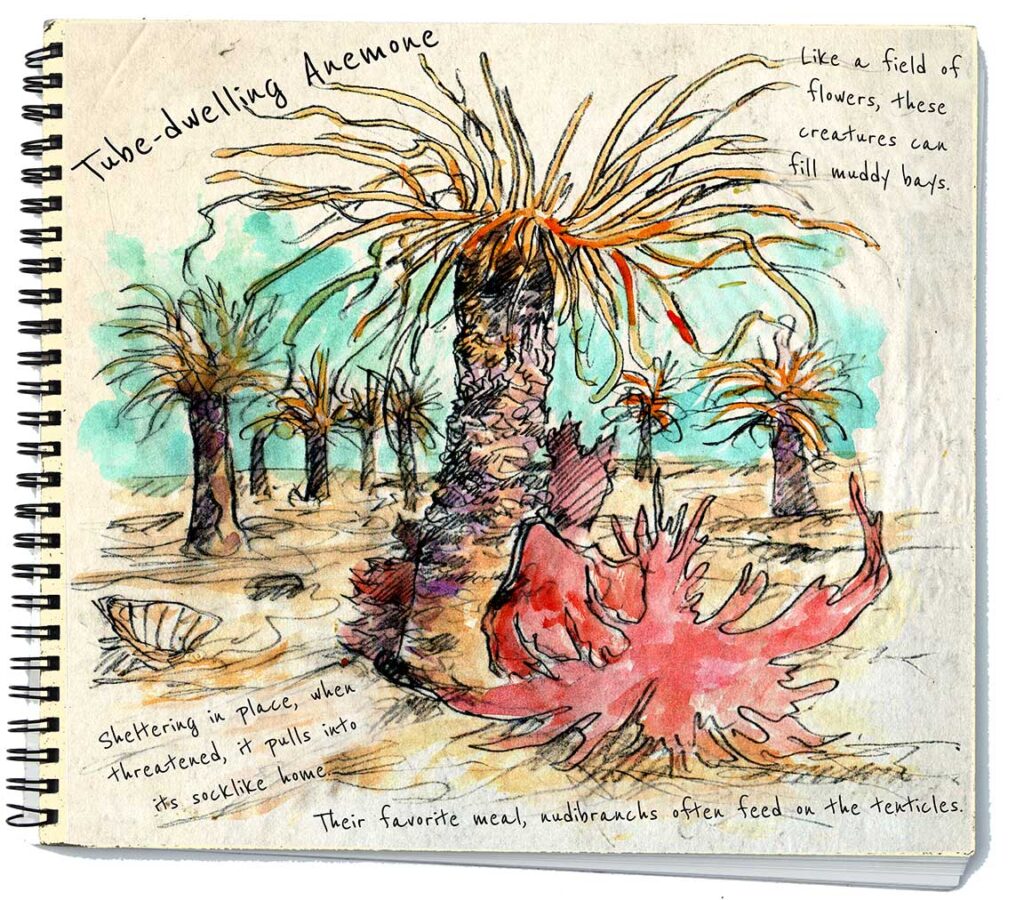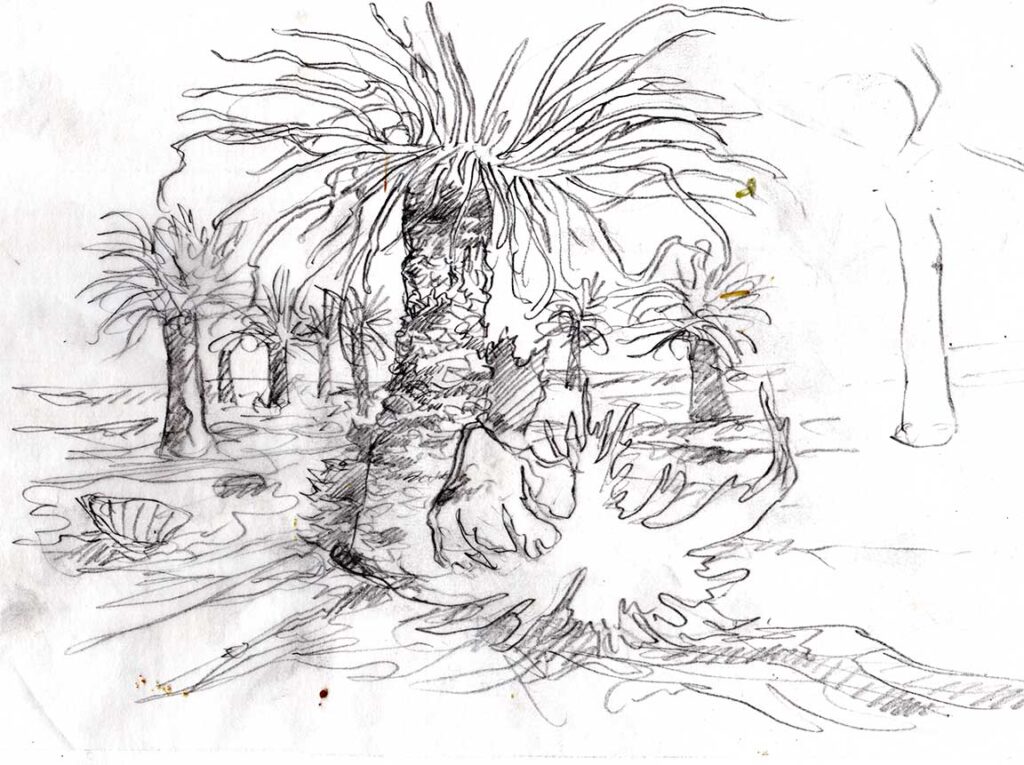A delicate flower-like anemone that is actually an animal. Yes, an animal that you’ll find just beneath your keel in sheltered mud-bottomed bays. While it looks more like a tube worm, this creature is actually related to jellyfish. Confusing, but to me it just shows the complexity of the underwater world we rarely see, and why I enjoy writing this page. These animals appear to have stout tubes below their tentacles waving in currents as they search for bits of food to snag, but they are actually soft and vulnerable. To protect themselves, they burrow into the mud and generate a fibrous string-like material they weave around themselves, almost like they’re knitting a sock. This can extend from above the surface down beside them into the mud as deep as three feet, a woven structure they live in, safe from predators. When one threatens, the anemone quickly pulls itself down into the protective tube.
While many anemones have stout fans of tentacles and large bodies holding them up into the current, this species relies on the mud substrate and a house of its own making. When its main predator, the giant nudibranch, grazes on the anemone’s tentacles, it also lays its eggs right on the outside of the anemone’s tube, putting the young’s first meal close at hand. You might think this would be the end of the anemone, but nature has evolved tentacles aplenty so both species survive. The anemone commonly lives up to 10 years and often congregates in colonies that resemble flower-filled meadows, the tenticles waving as blossoms in a gentle breeze. Flowers they are definitely not, animals are certainly are.
Larry Eifert paints and sails the Pacific Northwest from Port Townsend. His large-scale murals can be seen in many national parks across America, and at larryeifert.com.


